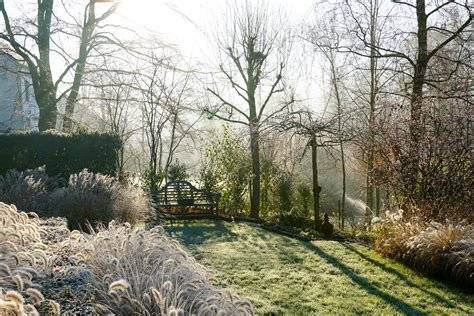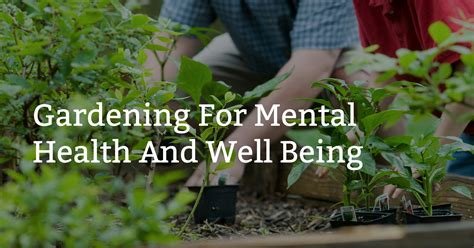Making the Most of Your Garden During Vacation Season
As vacation season approaches, many of us find ourselves torn between the excitement of getting away and the worry of leaving our beloved garden unattended. But fear not, for there are plenty of ways to ensure that your garden continues to thrive in your absence. In this blog post, we will explore various strategies and tips for making the most of your garden during vacation season. From choosing low-maintenance plants to implementing smart watering systems and setting up automatic timers, there are numerous ways to create a self-sustaining garden that will require minimal care while you are away. Whether you’re a frequent traveler or simply want to enjoy a worry-free vacation, these practices will help you maintain a beautiful and healthy garden all summer long. So, let’s dive in and discover how to keep your garden flourishing even when you’re not around!
Planning a Garden That Thrives in Your Absence
When planning a garden that thrives in your absence, it’s important to choose low-maintenance plants that require minimal care and attention. Opt for species that are well-suited to your climate and soil conditions, as these will be more resilient and less susceptible to disease and pest infestations.
Implementing smart watering systems can also contribute to the success of a low-maintenance garden. Drip irrigation, for example, delivers water directly to the root zones of plants, minimizing wastage and promoting efficient water usage. Consider installing a timer to regulate watering schedules, ensuring that your plants receive the right amount of moisture even when you’re not around.
Another key strategy for maintaining a thriving garden in your absence is to utilize mulch to retain moisture and suppress weeds. A layer of organic mulch such as wood chips or straw can help to regulate soil temperature and reduce evaporation, keeping your plants well-hydrated during dry spells. Additionally, mulch serves as a natural weed barrier, minimizing the need for frequent maintenance and weeding.
To create a more self-sustaining garden, consider incorporating a variety of perennials into your planting scheme. These hardy plants come back year after year, requiring minimal intervention and ongoing care. By choosing a diverse range of perennials that bloom at different times of the year, you can enjoy a vibrant and ever-changing garden landscape without constant upkeep.
Choosing Low-Maintenance Plants for Easy Care
When it comes to gardening, not everyone has the time or energy to be constantly tending to high-maintenance plants. That’s where low-maintenance plants come in handy – they require minimal care and attention, making them the perfect choice for those with busy schedules or a lack of experience in gardening.
One great option for low-maintenance plants is succulents. These hardy plants come in a variety of shapes and sizes, and they are known for their ability to store water in their leaves, allowing them to thrive in arid conditions with infrequent watering. They also require very little fertilization and are relatively pest-free, making them an ideal choice for beginners or those with a hectic lifestyle.
Native plants are another excellent choice for low-maintenance gardening. These plants are well-suited to the local climate and soil conditions, meaning they require minimal watering and fertilization once established. They also tend to be more resistant to local pests and diseases, reducing the need for chemical treatments and maintenance.
Lastly, perennials are a great option for low-maintenance gardening, as they come back year after year without the need for replanting. Once established, they require minimal care and will continue to add beauty to your garden with minimal effort on your part.
Implementing Smart Watering Systems for Efficient Irrigation
When it comes to maintaining a thriving garden, one of the most important factors to consider is efficient irrigation. With the increasingly unpredictable weather patterns and busy lifestyles, implementing smart watering systems can help ensure that your garden receives the necessary moisture without wasting water or requiring constant manual attention.
One of the key components of smart watering systems is the use of drip irrigation, which delivers water directly to the roots of plants, minimizing evaporation and water loss. This method not only conserves water but also promotes healthier plant growth by providing targeted hydration.
In addition to drip irrigation, incorporating rain sensors and soil moisture sensors into your watering system can help optimize water usage by detecting natural rainfall and the actual moisture levels of the soil, allowing for automatic adjustments to watering schedules. This not only conserves water but also prevents overwatering, which can lead to root rot and other issues.
Furthermore, the use of smart irrigation controllers can allow you to remotely monitor and adjust your watering schedule based on weather forecasts, temperature, and plant water requirements. This level of automation not only saves time but also ensures that your garden receives the right amount of water at the right time, promoting healthier and more resilient plants.
Utilizing Mulch to Retain Moisture and Suppress Weeds
One of the best ways to maintain a healthy garden with minimal effort is by utilizing mulch to retain moisture and suppress weeds. Mulch not only helps in reducing the amount of water needed for your plants but also prevent the growth of unwanted weeds, making it an essential component for a low-maintenance garden.
When you cover the soil with a layer of mulch, it acts as a barrier, preventing the sun from evaporating the moisture in the soil. This means that you won’t have to water your garden as frequently, which is especially beneficial during the hot summer months.
In addition, mulch also plays a significant role in suppressing weed growth. By smothering the weeds and blocking out the sunlight they need to thrive, mulch helps in keeping your garden beds free from unwanted plants, reducing the need for manual weeding.
Overall, utilizing mulch in your garden is a simple and effective way to conserve moisture, inhibit weed growth, and minimize the amount of maintenance required to keep your garden looking its best.
Creating a Self-Sustaining Garden with Perennials
When it comes to creating a garden that practically takes care of itself, perennials are the way to go. These plants are known for their ability to come back year after year, reducing the need for constant replanting and maintenance. By incorporating a variety of perennials into your garden, you can enjoy a beautiful and flourishing outdoor space with minimal effort.
One of the key benefits of using perennials in your garden is their ability to establish strong root systems, which helps them survive and thrive without frequent watering. This means less time spent lugging around a hose or watering can, and more time to sit back and enjoy your garden. Additionally, many perennials are drought-resistant, making them ideal for areas with limited water resources.
In addition to being low-maintenance, perennials also provide a variety of colors, textures, and heights, allowing you to create a visually appealing garden without constantly having to tend to it. From bright and vibrant blooms to lush green foliage, there are countless options to choose from when selecting perennials for your garden.
Ultimately, by choosing perennials for your garden, you can create a self-sustaining outdoor space that requires minimal intervention. With the right selection of plants, you can enjoy a thriving garden with little ongoing effort, allowing you to sit back and relax while nature takes its course.
Setting up Automatic Timers for Watering and Lighting
Setting up Automatic Timers for Watering and Lighting
One of the best ways to ensure your garden thrives in your absence is by setting up automatic timers for watering and lighting. By doing so, you can ensure that your plants are getting the right amount of water and sunlight even when you are not around to tend to them.
When choosing automatic timers for watering, look for ones that allow you to set specific watering schedules based on the needs of your plants. This will ensure that they are getting the right amount of moisture without the risk of over or under watering. Pairing these timers with drip irrigation systems can also help to deliver water directly to the roots of your plants, maximizing efficiency and reducing water waste.
Similarly, automatic timers for lighting can help to ensure that your plants are getting the right amount of sunlight, even if you are not around to adjust them manually. This is especially beneficial for indoor gardens or areas that do not receive consistent natural light throughout the day. Look for timers that offer customizable on and off times to mimic natural daylight cycles, promoting healthy growth for your plants.
By setting up automatic timers for watering and lighting, you can take the guesswork out of garden maintenance and ensure that your plants are receiving the consistent care they need to thrive.
Hiring a Garden Sitter to Maintain Your Garden
When you have a busy schedule that keeps you away from home for extended periods of time, it can be challenging to keep up with the maintenance of your garden. This is where hiring a garden sitter can be a game-changer. A garden sitter is someone who can come to your property and take care of your garden when you are unable to do so.
By hiring a garden sitter, you can ensure that your plants are being watered, weeded, and pruned as needed. They can also keep an eye out for any signs of pest or disease infestations and take appropriate action to address these issues before they get out of hand.
In addition to basic maintenance tasks, a garden sitter can also help with larger projects such as planting new flowers or shrubs, applying fertilizer, or performing seasonal clean-up tasks. This can help to ensure that your garden remains beautiful and healthy even when you are not able to give it your full attention.
When choosing a garden sitter, be sure to look for someone with experience and a passion for gardening. You’ll want to find someone who has a good eye for detail and is knowledgeable about the specific needs of the plants in your garden. It’s also important to communicate clearly about your expectations and provide any necessary instructions or tools to ensure that your garden sitter can do their job effectively.
Frequently Asked Questions
How can I plan a garden that thrives in my absence?
You can plan a garden that thrives in your absence by choosing low-maintenance plants, implementing smart watering systems, utilizing mulch, and creating a self-sustaining garden with perennials.
What are some low-maintenance plants for easy care?
Some low-maintenance plants for easy care include succulents, ornamental grasses, lavender, and yarrow.
How can I implement smart watering systems for efficient irrigation?
You can implement smart watering systems such as drip irrigation, soaker hoses, or automatic timers to ensure efficient and targeted watering for your plants.
What are the benefits of utilizing mulch in the garden?
Utilizing mulch can help retain moisture in the soil, suppress weeds, and regulate soil temperature, ultimately reducing the need for frequent watering and weeding.
How do I create a self-sustaining garden with perennials?
You can create a self-sustaining garden with perennials by choosing plants that come back year after year, require minimal maintenance, and have a long blooming period.
What is the advantage of setting up automatic timers for watering and lighting?
Setting up automatic timers for watering and lighting can ensure that your garden receives consistent care even while you’re away, helping to maintain plant health and security.
How can I hire a garden sitter to maintain my garden during vacation?
You can hire a garden sitter who can water your plants, perform light maintenance, and keep an eye on your garden while you’re away, ensuring it stays healthy and well-cared for.






